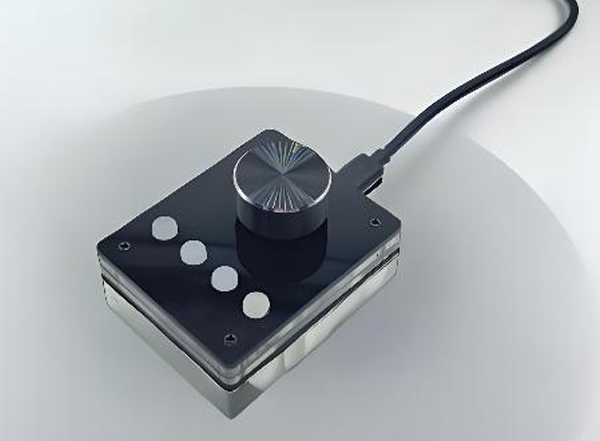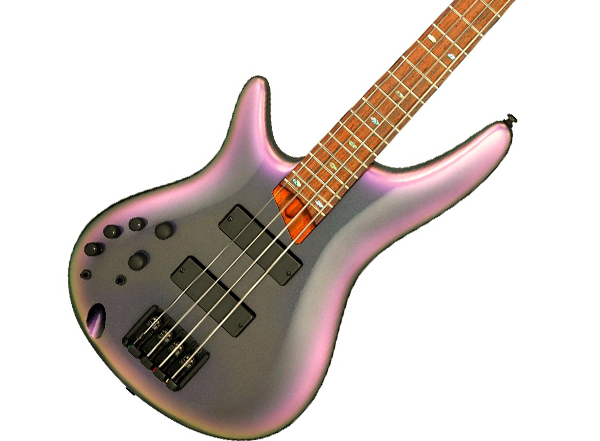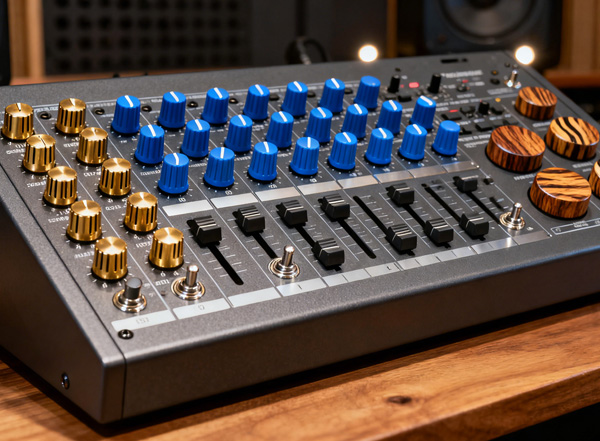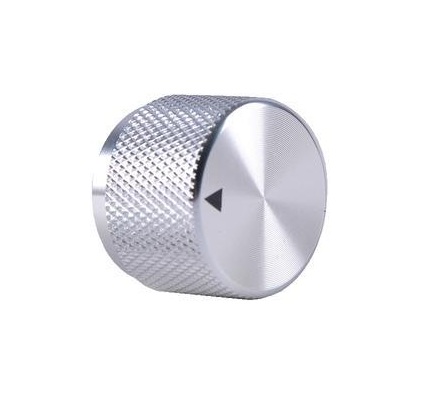
When you look down at your guitar or effects board, the knobs may seem insignificant. But in reality, they are key interfaces for tone, feel, and ergonomic design. Whether you’re replacing knobs on a pedal, customizing an effects unit, or upgrading your guitar’s control circuitry, understanding the characteristics, mounting methods, materials, and styles of different types of knobs will help you choose the right knobs and avoid compatibility issues.
What Does a Knob Do?

Knobs are like a direct tactile connection between you and a potentiometer or encoder, ultimately linking to your signal chain. On a guitar, knobs typically control volume or tone. On effects pedals, knobs might control level, gain, tone, mix, or other parameters. Adjusting knobs affects how easily you set parameters, how stable they are during use, and your confidence in fine-tuning them while playing.
Knobs are small control dials, allowing you to change functions like tone and volume. While many guitarists set all knobs to “10,” experimenting with the right knobs to adjust different control parameters will open up a whole new world of tone.”
Therefore, knobs are more than just about appearance. The right knobs affect the performance of your equipment and how you use it.
Types of Knobs by Function & Shape
Just as there are different functions for knobs (volume, tone, mix), there are different shapes and styles, each offering distinct aesthetics and ergonomics.

Volume & Tone Knobs
On a guitar, the “Volume” knob controls the overall volume, while the “Tone” knob adjusts the high-frequency components.
On an effects pedal, one knob might only control volume, while another might control gain or mix. In either case, the knobs need to be comfortable and precise to meet your control needs.

Bass vs Electric Guitar Knobs
While the principle is the same for bass or electric guitars, often the knobs are ergonomically tuned for the instrument. For instance, bass guitars may have larger knobs or different texture because you might use your thumb/other hand differently.

Exotic Wood Zone
In pedal boards, you’re often working with many knobs in proximity, so profile and spacing become more important.
Shape Styles: Bell, Speed, Dome, etc.

Here are common styles you’ll see:
- Bell (Hat) knobs: Often found on Strat-style guitars; wider skirt at base, tapering toward top.
- Speed (Barrel) knobs: Straight cylindrical or slightly larger—easy to grip and often used where frequent tweaks are needed.
- Dome or Flat-Top knobs: Sleek, modern appearance, often metal; low profile makes them good for tight spacing.
Choosing the right shape is partly a style choice, but also a functional one, considering how often you adjust it, how much space you have, and how your hand moves.
Fitment & Compatibility: What You Must Know
When choosing replacement knobs, one of the most important steps is ensuring they match the potentiometer or encoder underneath. Even the best-looking knobs won’t function properly if they aren’t securely mounted on the shaft.
Polypotentiometer shafts generally fall into two main categories: splined shafts and smooth shafts. Splined shafts use a series of raised teeth to grip the push-button knob. Smooth shafts, on the other hand, rely on a small screw on the side of the knob to firmly clamp the shaft’s flat surface. While this difference may seem small at first glance, it significantly affects how well the knob stays in place during use.
Among splined shafts, two common types are easily overlooked by many users: metric coarse splined shafts and imperial fine splined shafts. Metric splined shafts are typically around 6 mm in diameter and have fewer but larger teeth. Imperial fine splined shafts are slightly smaller, typically around 5.95 mm, and have even more and finer teeth. Although the sizes are very similar, and the knobs may seem interchangeable, their mounting methods are actually quite different, so never mix them up.
Smooth shafts are completely different. These solid shafts, typically close to 1/4 inch in diameter, have no grooves. Therefore, they require knobs with retaining screws, which are tightened to ensure a secure fit. Without screws, the knob simply cannot be held in place. This makes identifying the type of shaft especially important when choosing new hardware for a guitar or effects pedal.
Due to these subtle but important differences, knobs are not universal. Two knobs may look identical, but the type of shaft inside is completely different. Therefore, always remove an existing knob before purchasing a replacement. Take the time to check whether the shaft is a spline or a smooth shaft, measure the diameter, and count the number of grooves if necessary. These small details can prevent problems later and ensure your new knob is stable, responsive, and professional in use.
A little checking can make all the difference. Knowing the type of shaft you use and matching it with the appropriate knob not only avoids installation problems but also improves the overall feel of the gear. Smooth rotation, consistent resistance, and a secure fit all depend on choosing the right style from the start.
Materials & Finish: How They Influence Feel and Look


The material your knob is made from influences how it feels under your fingers and how it fits into your aesthetic.
Plastic: Lightweight, affordable, and available in many colors. Great for standard builds or where cost is important.
Resin/Bakelite: Offers a vintage feel and is often used for retro-style guitars or pedals.
Metal: Heavier, more durable, and gives a premium tactile feel. On a pedal you’ll often appreciate the sturdiness of a metal knob.
Wood or specialty materials: These are more boutique, and while they add aesthetics, you’ll want to ensure fit and durability aren’t compromised.
Practical Use-Case Scenarios
Let’s consider a few real-world examples to illustrate how these choices play out.
Example A: Basic Overdrive Pedal, Single Knob
In this case you’ll likely want a knob that stands out visibly. Fitment is simple. A barrel knob with ribbing and a bright color works well, metal if this pedal sees heavy use. Installation is straightforward; just make sure clearance around the knob is sufficient.
Example B: Guitar with Active Preamp, Volume + Blend + EQ Knobs
Here you have multiple knobs of different priorities. Volume might warrant a larger knurled metal knob for quick access. EQ controls could be smaller, lower profile knobs with distinct textures. Colors can help differentiate, perhaps a neutral color for volume, and contrasting colors for blend or EQ. Ensure each knob fits the respective shaft type.
Example C: Custom Pedal Board with 8-10 Knobs
For compact control panels, low-profile, dome-shaped or flat-topped knobs help prevent accidental activation. Consider using a uniform shape, but differentiate functional areas with different finishes or colors.
For frequently used knobs, textured metal is a good choice. For control knobs that require no further attention after setup, simpler plastic is a better option. Size consistency is crucial; if you are purchasing multiple knobs, check that the specifications match to avoid compatibility issues.
Conclusion
Choosing the “right knob” is more than just replacing it with a knob of the right color. Knobs connect your hands to your equipment; they affect the smoothness of your adjustments, your playing confidence, and the overall visual harmony of your setup.
Whether you’re upgrading your guitar, adjusting your effects board, or building your own equipment from scratch, take the time to examine the knob levers, choose a style that suits your playing style, select the appropriate material based on your needs, and install them carefully. Doing so can transform a small component into an integral part of your musical expression.




